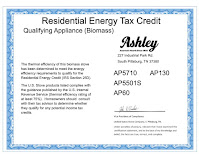Excerpts of a statistical report from Bioenergy Europe and the European Pellet Council
This pellet statistical report is produced by Bioenergy Europe, a “non-profit, Brussels-based international organisation bringing together 41 associations and 122 companies, as well as academia and research institutes from across Europe.” We find it extremely valuable and timely, in part because it shows the extensive use of domestic and imported pellets for residential and institutional heating.
News coverage in North America almost exclusively focuses on the industrial pellets exported for electric generation, primarily in UK. This report shows a much broader and more diverse pellet market that also relies on premium heating pellets, which are made by plants using far more residuals than the plants operated by companies such as Enviva which are now relying extensively on whole logs.
AGH calls on the scientific community, environmental groups, policy makers and the media to look at the end use of pellets, and the highly variable carbon impact of using pellets at 80% efficiency, compared to 35% efficiency.
Bioenergy Europe released parts of their report to the general public, which can be downloaded here where many of the sections are blurred. We only excerpted portions of this report below that deal with pellets used for heating.
Forward (excerpts)
The sales of residential pellets heating appliances showed very encouraging trends in countries like Germany, France and Austria, proving that, when the governments actively invest in phasing out fossil fuels, pellet systems directly appear as a credible, affordable and sustainable solution. In 2021 we have been recording even more encouraging sales in those countries.
First, the 2020- 2021 heating season lasted much longer than usual, which, together with homeworking requirements in many countries, led to an increased pellet use in the residential market. Secondly, this long heating season, coupled with high electricity prices, encouraged many industrial operators to use more pellets than usual. … it is incredibly impressive to see how pellet prices compare to fossil fuel prices, which are currently hitting historical record highs. Together with increasing appliance sales, this shows again how bioenergy can help to fight energy poverty in Europe.
World pellet consumption (excerpts)
In North America, the use of pellet has not witnessed a dramatic growth in the recent years despite different initiatives to grow the market both in US and Canada. Still, a niche market is consolidating its expansion: the pellet barbecues. The increasing sales of these barbecues lead to increasing sales of high margin pellets (e.g. 3 producers of 10.000 tonnes in Canada).
In South America, the use of pellet, mostly for residential and mid-scale heat production, is expected to grow in the future
European pellet consumption for heating
The annual increase of the pellet demand in the residential/commercial sector was smaller in 2020 than in 2019: +3,8% in 2020 (vs 2019) and +5% in 2019 (vs 2018). It can be explained by the fact that 2018 has benefited from fairly good heating seasons while 2019 was deeply impacted by the low 2019-2020 heating season and a low start of 2020-2021 heating season. Furthermore, the not so strong increase in sales of heating appliances did not compensate for this low demand. Despite this, France and Serbia are highlighted as growing examples, as they have both registered the biggest increase (in absolute terms) in residential/commercial pellet consumption.
Still, in 2020, the residential and commercial consumption increased together by 152.339 tonnes. Commercial pellet demand decreased in 2020 (-4%) while the residential showed a weak growth (+2%) and in absolute terms: + 289.686 tonnes for residential use and -137.287 tonnes for commercial use.
This sudden rise in consumption generated again some tensions in the supply leading to shortage in some areas and generating a price increase in 2018. The heating season of 2018-2019 was slightly milder than the previous ones but only marginally colder than the ones from 2013 to 2016, leading to a modest growth of the pellet consumption for heating. The 2019-2020 season followed the same pattern as the previous season and a reduction in consumption also appeared. The 2020-2021 season started very similarly to the previous but then lasted for much longer. Indeed, in many areas, the energy demand was still rather high in March and April, which unexpectedly supported the pellet demand, allowing most of the market players to empty their stock.
Residential Pellet Consumption
European stove market
Portugal: The installation of pellet boilers and stoves reached a peak in the winter of 2019-2020. The producers consider that, in the upcoming years, the number of installations will be steady with tendency to decrease in 2025 due to the competition with heat pumps.
Serbia: A huge increase of pellet stoves and boilers is the result of a huge number of schools (over 200), kindergartens, health care centres and other public and commercial buildings that have switched from coal and heating to pellets. Since 2019, the government of Serbia has supported a vast number of public buildings in replacing heating oil and coal with wood pellets leading to sales increase.
Spain: The market trends in 2020 were worse than in 2019 with a 16% decrease in the annual sales of pellets stoves. During the pandemic, the installations of stoves have been impacted due to the limited availability of installers, while sales greatly recovered in the second part of the year. 2021 should be rather similar while 2022 and beyond should be more favorable as Renewable Energies supports, and recovery funds will be put into place.
European residential boiler market
Further reading:













